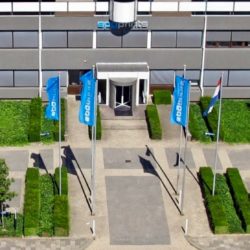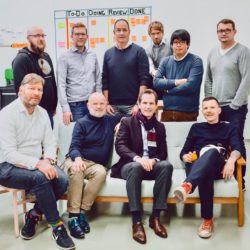Network study reveals importance of Supply Chain at SPG Prints

To achieve greater supply chain visibility and explore opportunities for optimization, the company SPG Prints enlisted the help of logistics consultancy firm Groenewout, who created a model of the existing supply chain and analysed various scenarios. That resulted not only in lower costs, but also – and perhaps more importantly – more appreciation for the Supply Chain role within the company. “People are now more accepting of our involvement.”
The digital transformation is well under way, and the textile and printing industries are no exception. Ever-more textile companies are switching to digital printing machines. “As a result, the sale of ink is increasing by 20 to 30% a year, and last year by as much as 50%”, says Geert Wanten from SPG Prints. As Director Operations, Wanten is responsible for the Dutch operations and is also a board member at SPG Prints, which has production facilities in the Netherlands, Brazil, China, India and Austria.
The rise of digital printing is also creating extra supply chain complexity for SPG Prints, which produces not only the printing machines themselves but also the associated consumables. For conventional printing machines that means screens: large rollers made of nickel, a metal that can be purchased relatively easily in large volumes.
“But for digital printing machines we produce inks in various trend-sensitive colours. They are often made from natural dyes, which means that there can be slight colour variations. That’s why we have to conduct extra quality checks, resulting in longer lead times. Plus our raw material suppliers are not exactly just around the corner from us”, comments Wouter Visser, Supply Chain Manager at SPG Prints.
New production facility
The screens are produced at four facilities – in the Netherlands, Brazil, China and India – which largely manufacture for their own local regions. So far, the inks have all been produced at the Dutch facility, which is located next door to the head office in Boxmeer. In view of the rising demand for inks, the company had started to question whether one production facility was enough.
There were also a few doubts about the efficiency of the existing supply chain for screens, which SPG Prints supplies in various lengths of between 1.5 and 4 metres. “Which length we produce depends on the width of the production bath they are immersed in”, explains Wanten. “In Boxmeer the production baths are 4 metres wide, so the screens are 4 metres long as standard. If a customer wants a 3-metre screen we simply cut a metre off.”
That nickel is reused, of course, but the company prefers not to waste so much effort on a product that is only partly needed. Wanten: “In Brazil we have a production line with a 3-metre-wide production bath. It might be more efficient to make all of our 3-metre-long screens there instead.”
Global supply chain network study
In order to find the answers to those questions, SPG Prints enlisted Groenewout’s help to conduct a global supply chain network study. Visser: “We started by gathering a whole load of data, including on the transport flows. We put all that data into a model and then analysed various scenarios.”
The network study took six months to complete, but the insights it provided into the current supply chain costs alone were enough to make the project worthwhile. SPG Prints’ ERP landscape is fragmented, which makes it difficult to generate reports that allow direct comparisons between the performance of the various production locations.
“Gathering all the data was a mammoth task, but we’re now able to benchmark our supply chain costs against similar companies. And an added advantage is the improved collaboration between all our sales offices and production facilities. Thanks to the Groenewout study, we now talk to one another much more”, says Wanten.
The study also answered the question regarding which supply chain locations the company should invest in, and the board of directors took the findings into account in the strategic decision-making process. The company has already started reallocating production orders, for example. “We’re now producing more of the 3-metre-long screens in Brazil”, reveals Visser.
Wanten adds: “According to Groenewout we can save up to 20% on our supply chain costs. I estimate that we’re currently at around 3 to 5 percent, partly because we’ve managed to cope with the growing demand for screens without having to increase our production capacity.”
Supply Chain is increasingly important
However, perhaps the most important benefit of the study has been the improved collaboration between the various SPG Prints locations. Whereas the five production facilities used to operate independently of one another, they now act more as one supply chain. They have more contact with each other and share more information, including about inventory management and sales & operations planning (S&OP).
“We’re already thinking about potential next steps, such as integrated production planning for all our plants. Right now, they consult one another in terms of production orders and production capacity, but each facility is still responsible for its own planning”, explains Visser.
The improved collaboration has not gone unnoticed at the head office either. Visser: “At SPG Prints, we introduced supply chain management just four years ago. The study has demonstrated the importance of this discipline. There is now more acceptance for the involvement of Supply Chain across all layers of the company.”










